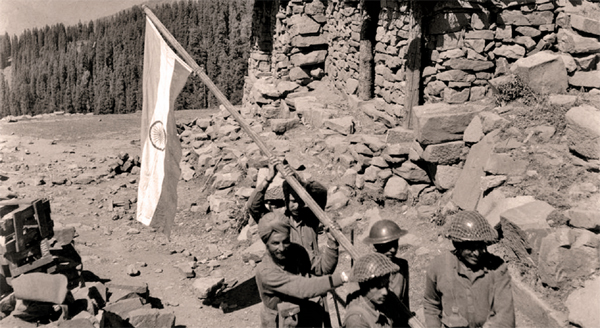In October 1965, people from Poonch started travelling to Uri, Baramulla and to Srinagar via Haji Pir Pass on a regular basis after troops of 1 Para of the Indian army captured it on August 28 that year. After 1947-48 war, the area had remained under Pakistani control and it was after 18 years that this traditional route was re-established.
The distance between Poonch and Uri via this route is approximately 55 km and it takes a couple of hours to travel this distance. Otherwise, people from Poonch have to travel to Jammu, 250 km away, then to Srinagar, 270 km, and another 80 km to reach Uri town! They have to thus cover a distance of approximately 590 km to reach the same destination. Poonch and Uri towns are virtually akin to two sides of a coin located exactly opposite to one another if one can use Haji Pir Pass.
Another route from Poonch to Srinagar via Bafliaz, Draba, Pir ki Gali and Shopian is a distance of about 280 km. It is closed these days, as a precautionary measure related to the pandemic. To discourage travel between the two regions of Kashmir and Jammu.
The comparative advantages that accrued for linking Jammu with Kashmir through Poonch via Haji Pir Pass are perhaps clear to readers now that the relative distances of various routes have been explained. Just imagine travelling a distance of 55 km over two or three hours in 1965 and travelling 280 km via Shopian or 600 km via Jammu! Incidentally, the route via Shopian takes almost eight hours or more, and the other route can take more than two days!
The Haji Pir Pass was captured by troops of 1 Para led by Major R S Dayal, who retired as a Lieutenant General years later. Late Ghulam Rasool Kar, a senior Congress leader of that era, was one among those people who travelled from Baramulla to Poonch.
After its initial capture on August 28, firm control over Haji Pir Pass could be established only by September 10. For this, the Indian army had to capture Kahuta, an area where Pakistani dictator General Zia Haq had kept Zulfikar Ali Bhutto in custody before hanging him. Several nearby peaks and other dominating hill features were also captured by the Indian forces.
Unofficially, the 1965 war with Pakistan had started on August 5 that year when infiltration was detected both in Mendhar (Poonch) area of the Jammu region and in Gulmarg area of Baramulla district in Kashmir. It was ended after UN intervention on September 23, but not before the Indian army had moved into Pakistan Punjab towns of Lahore and Sialkot.
The offensive moves by 1 and 11 Corps of the Indian Army on these towns surprised Pakistan which had launched attacks in Chhamb-Jorian sector leading to Akhnoor town. Its plans were to capture the only bridge on the Chenab river that existed back then, cut off Poonch as also Rajouri located to north-west of its forward thrust. It had designs to capture Jammu also, located 32 km east of Akhnoor.
The joy of the people in Poonch and Rajouri districts of using the pre-1947 route was, however, short-lived as Haji Pir Pass was returned to Pakistan in January 1966 after Tashkent Pact. The return of this immensely strategic hill feature rankles military leadership till date. Incidentally, this stretch has been used by Pakistan to push terrorists both into both south and north of Pir Panjals.
Under the Tashkent Pact, the two armies were asked to return to the positions they occupied prior to August 5, 1965. The return of the captured Haji Pir Pass was a part of this pact but Pakistan refused to vacate some territories in Chhamb-Jorian it had captured around the same time.
The story of Haji Pir Pass capture and its return was very similar to return of over 92,000 PoWs (Prisoners of War) captured in Dhaka in December 1971. The gains made by the army on battlefield through sacrifice of men were squandered on the table, repeatedly.
Sant Kumar Sharma, a seasoned journalist, is an authority on Jammu and Kashmir. Two of his books on Article 370 and Delimitation are already out. The third one on Indus Waters Treaty is with the publishers.
Sant began as a teacher but after six years, joined the Indian Express, Chandigarh in 1990, the year when terrorism was taking its first step in J & K and soon there would be exodus of lakhs of Kashmiri Pandits from the Valley. He subsequently worked for The Statesman, The Times of India and Star News among others. He is based in Jammu since May 2000.


